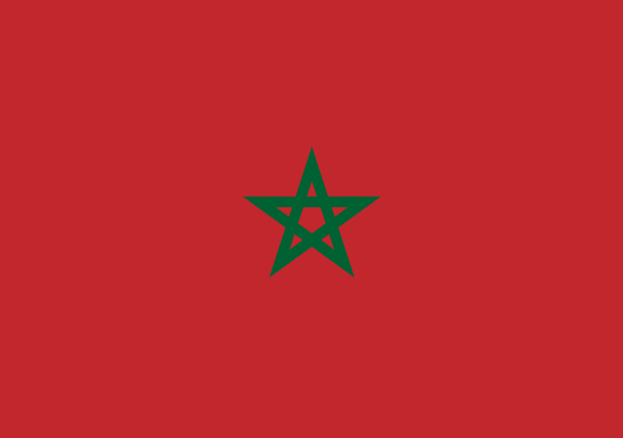
Officially known as the Kingdom of Morocco, Morocco is a country in the Maghreb region of North Africa. Best known for its picturesque, rugged Mountains and large portions of Desert, Morocco has grown into the tourist’s gateway for African cultures to the south, distinctly Middle Eastern landscapes to the east and the prominent sphere of Influence Europe has to the north.
It is also one of only three countries (with Spain and France) to have both Atlantic and Mediterranean coastlines.
Celebrating independence from France and Spain in 1956, Morocco would put to rest a period of 126 years rule by two competing nations which had marked Morocco for themselves.
Whilst Morocco has undergone a number of Dynasty changes throughout its lifetime, the first European power to take interest and then colonise the area would be France.
France’s initial interest in Morocco starts in 1830, as they sought the riches of the Sahara to strengthen their resources as they moved further into an industrial revolution. Furthermore, Morocco’s geographical location and relative sovereignty posed a threat to the French Colony, Algeria to the east as well as being an ideal shipping lane with Morocco having access to two Seas.
Spain, not one to be left behind in Europe’s economic boom, sought to ensure their own industrial age would continue smoothly with North African riches. Secondly, with French power growing in to the North and now to their South; the Spain sought to avoid a two-pronged attack in the possible future and also sought to stem the flow of French goods and customs which naturally found their way into southern Spain. By 1860, a dispute with France over Spain’s Ceuta enclave led Spain to declare war.
By 1884, Spain had won two enclaves in the region and had enlarged several settlementa in the area; leading Spain to create a ‘protectorate’ in the coastal areas of Morocco.
It would not be until 1904 that Spain and France would formally dedicate areas of land for themselves, a decision that was acknowledged by the British and would go onto anger the German Empire which was also undergoing an intense period of internal strife; one camp sought to expand German influence and create colonies overseas, whilst others desired a more domestic sphere of influence- in any case, both camps wanted German expansion for their industrial goals and other European powers becoming ‘Super-powers’ threatened the newly formed German nation.
In either case, a crisis loomed in 1905 and would not be resolved until 1906 with the Algeciras Conference. Peace would not be long lasting and tensions began to flair between the European powers over the location, interaction and involvement of their Colonies- sparking the Agadir Crisis in which a large, French military force was deployed in Morocco, sparking Germany (Austria-Germany) to launch a gunboat with 121 men on-board to the port of Agadir.
Relations would be calmed again in 1912 and the Treaty of Fez officially placed Morocco under French protection. This was seen as a betrayal by the people as sections of Morocco were being given to German colonies in exchange for accepting that Morocco was under French protection; sending the city into a two day riot.
The Sultan at the time; Sultan Abd al-Hafid abdicated the throne to his brother in the wake of the incident.
Beginning of independence
In 1943, the Istiqlal Party (Independence Party) was founded with the main goal of seeking Moroccan Independence from both France and Spain and had backing with very discreet US support.
France’s exile of Sultan Mohammed V in 1953 to Madagascar and his replacement by the unpopular Mohammed Ben Aarafa sparked active opposition to the French and Spanish protectorates. The most notable violence occurred in Oujda where Moroccans attacked French and other European residents in the streets. France allowed Mohammed V to return in 1955, and the negotiations that led to Moroccan independence began the following year. In March 1956 the French protectorate was ended and Morocco regained its independence from France as the “Kingdom of Morocco”. A month later Spain ceded most of its protectorate in Northern Morocco to the new state but kept its two coastal enclaves (Ceuta and Melilla) on the Mediterranean coast.
Sultan Mohammed became king in 1957.
Moroccan Independence may not be celebrated, but it is recognised today on November 18th
